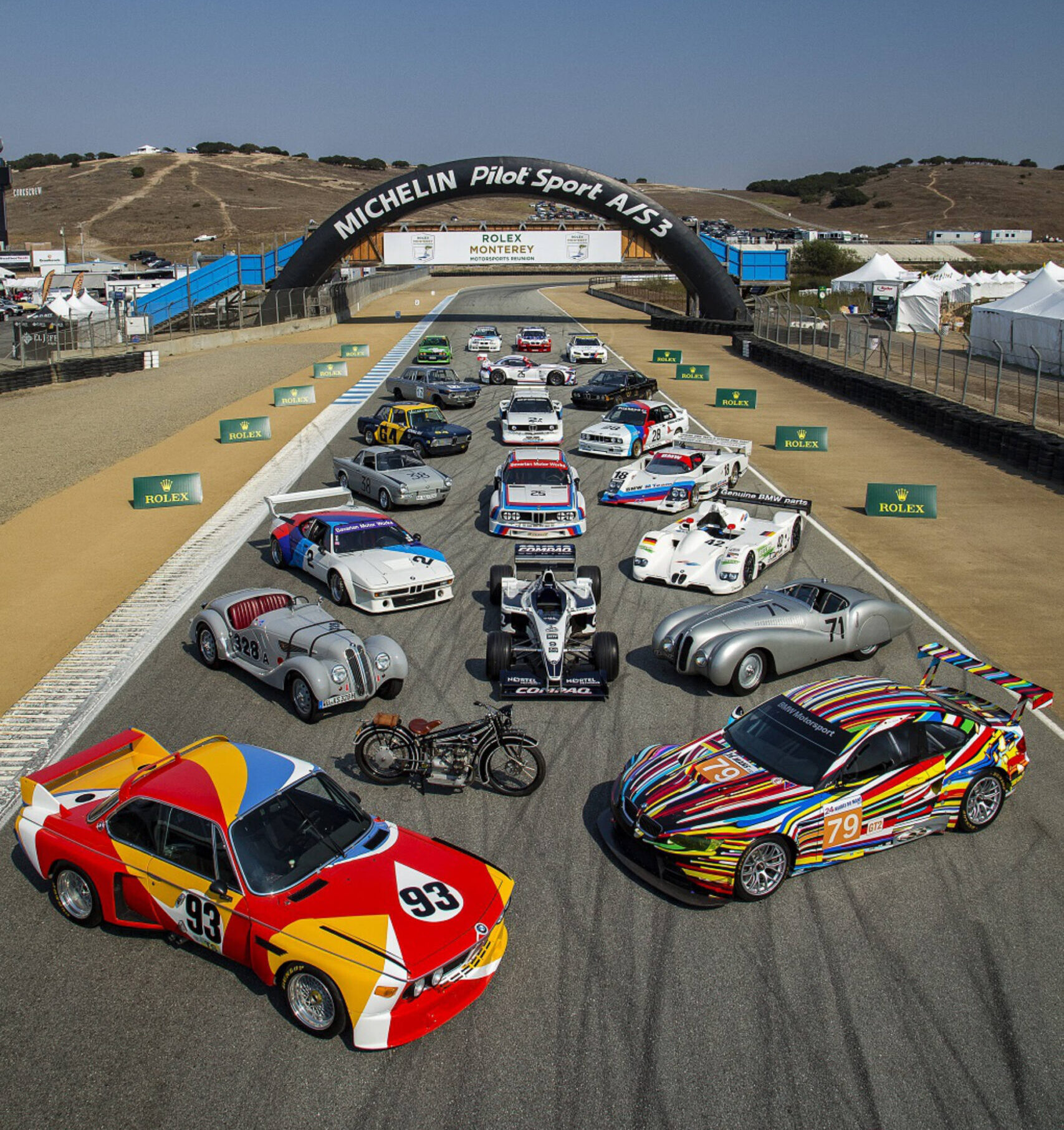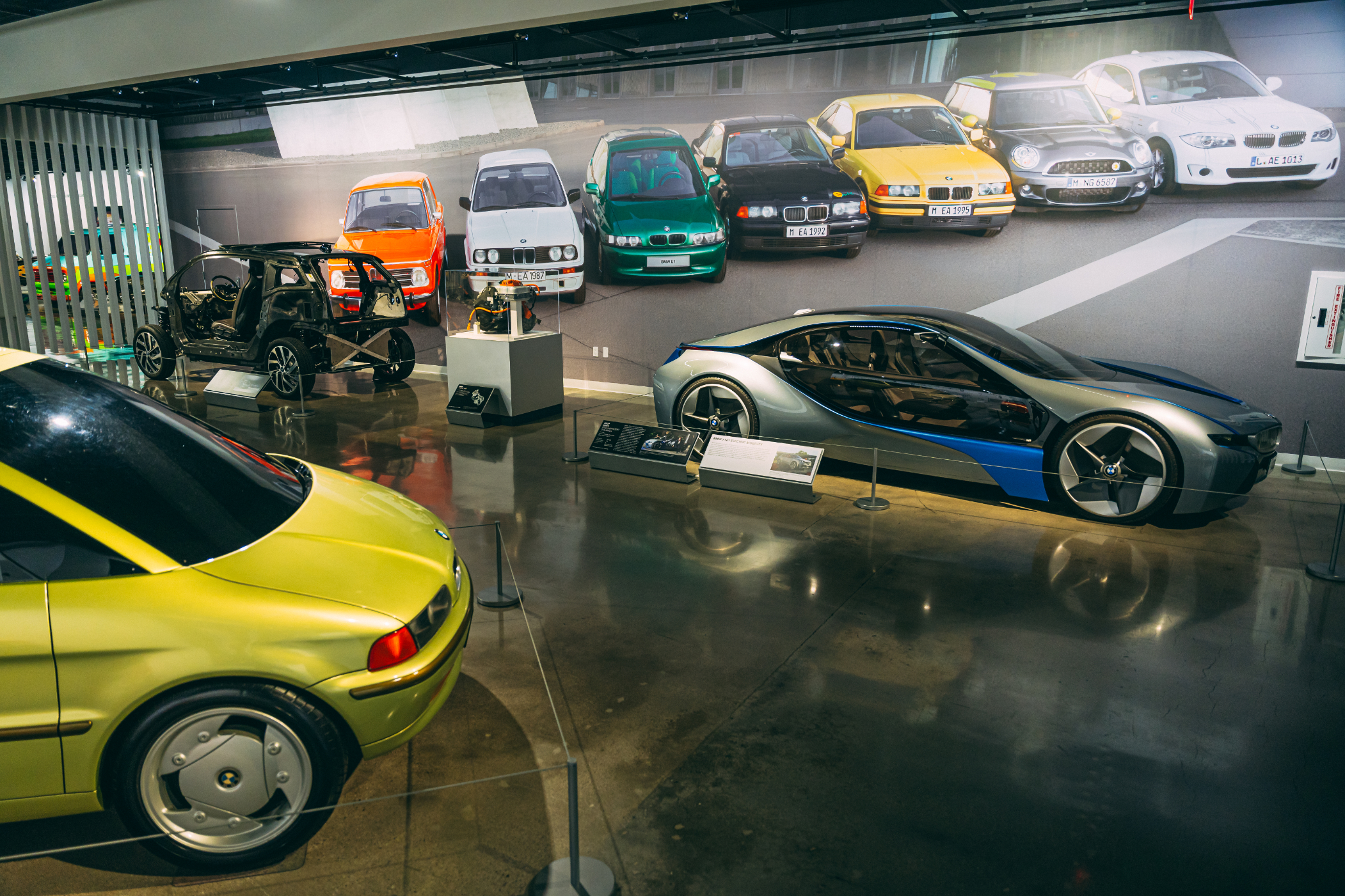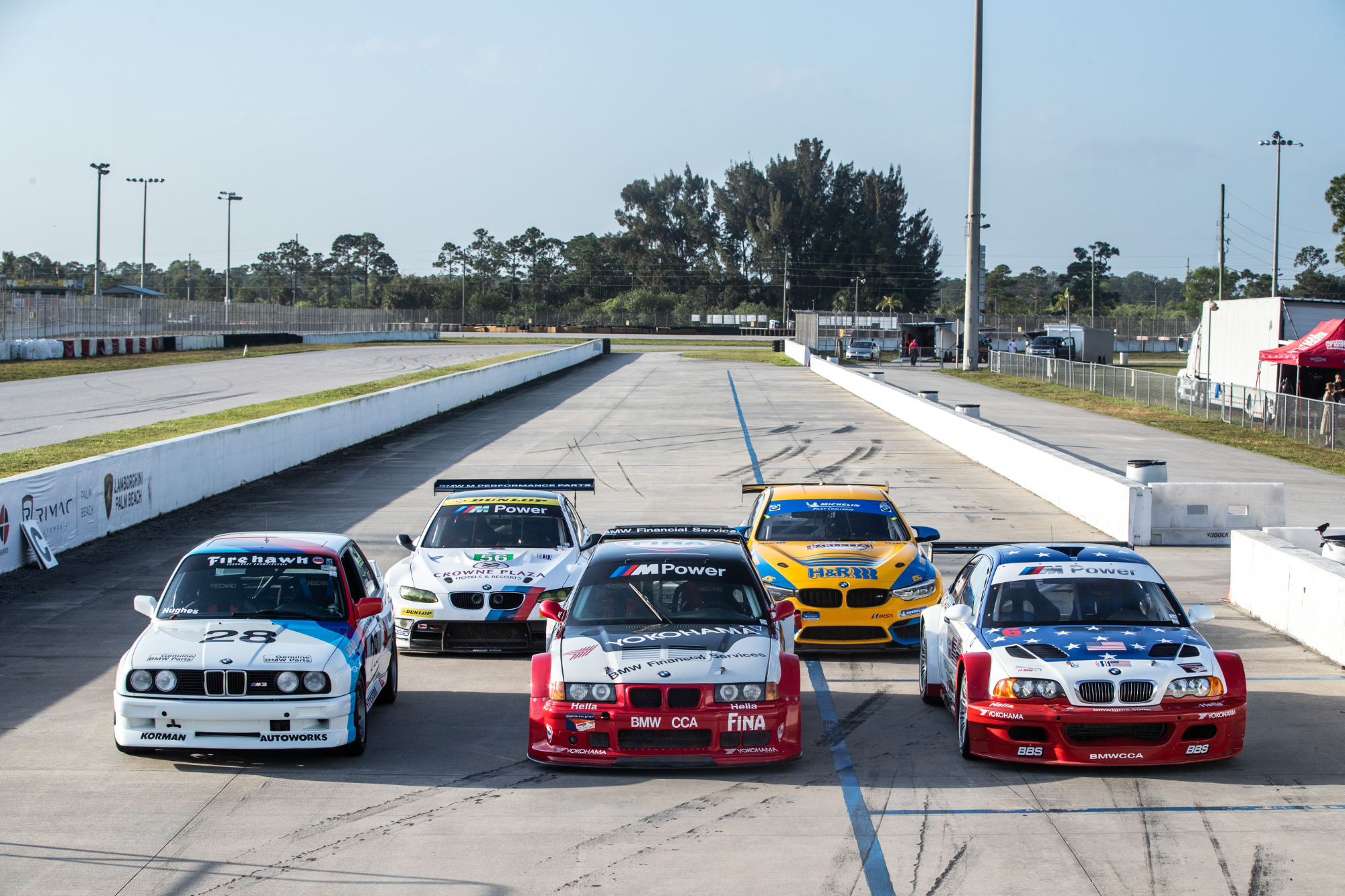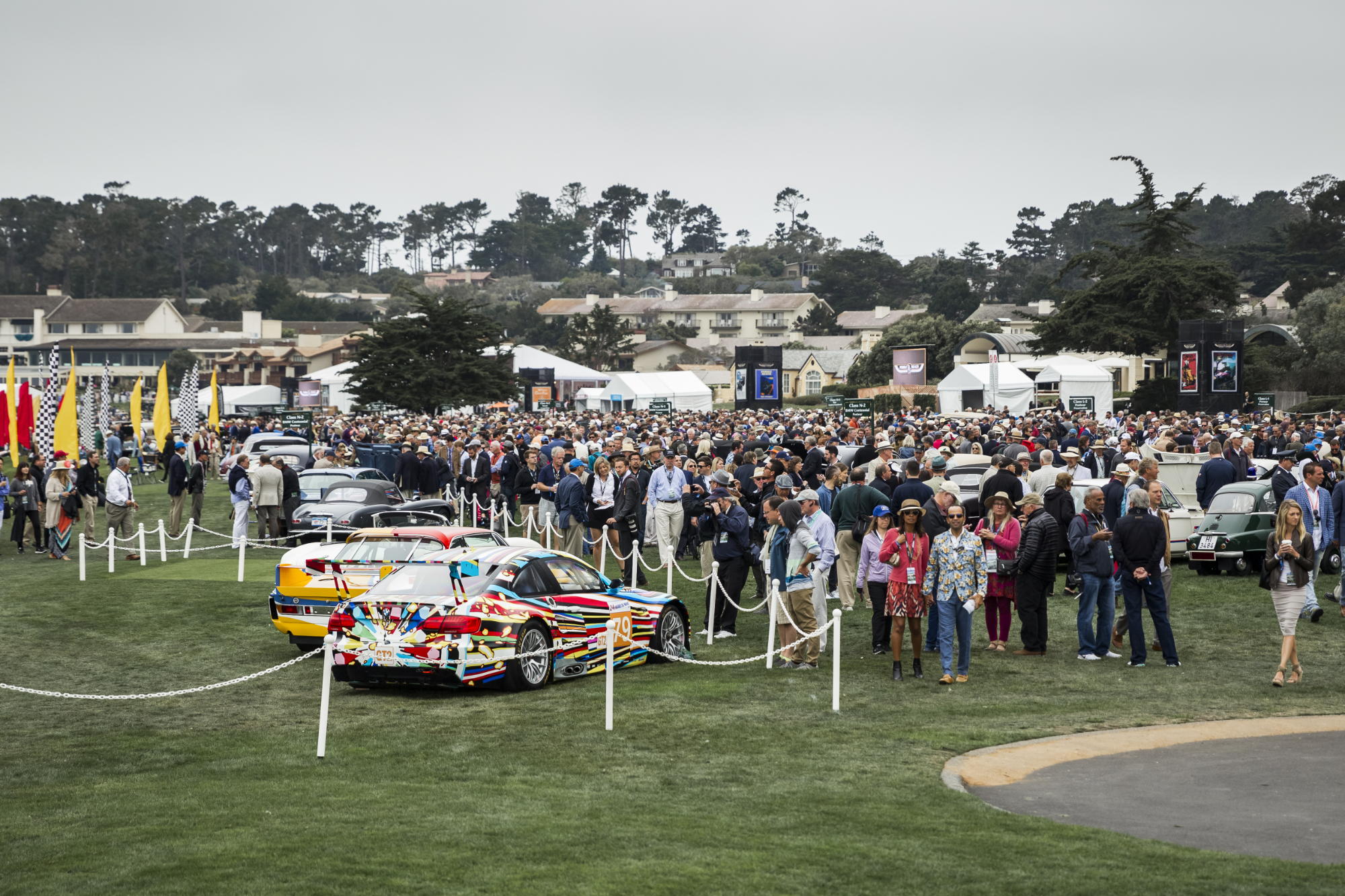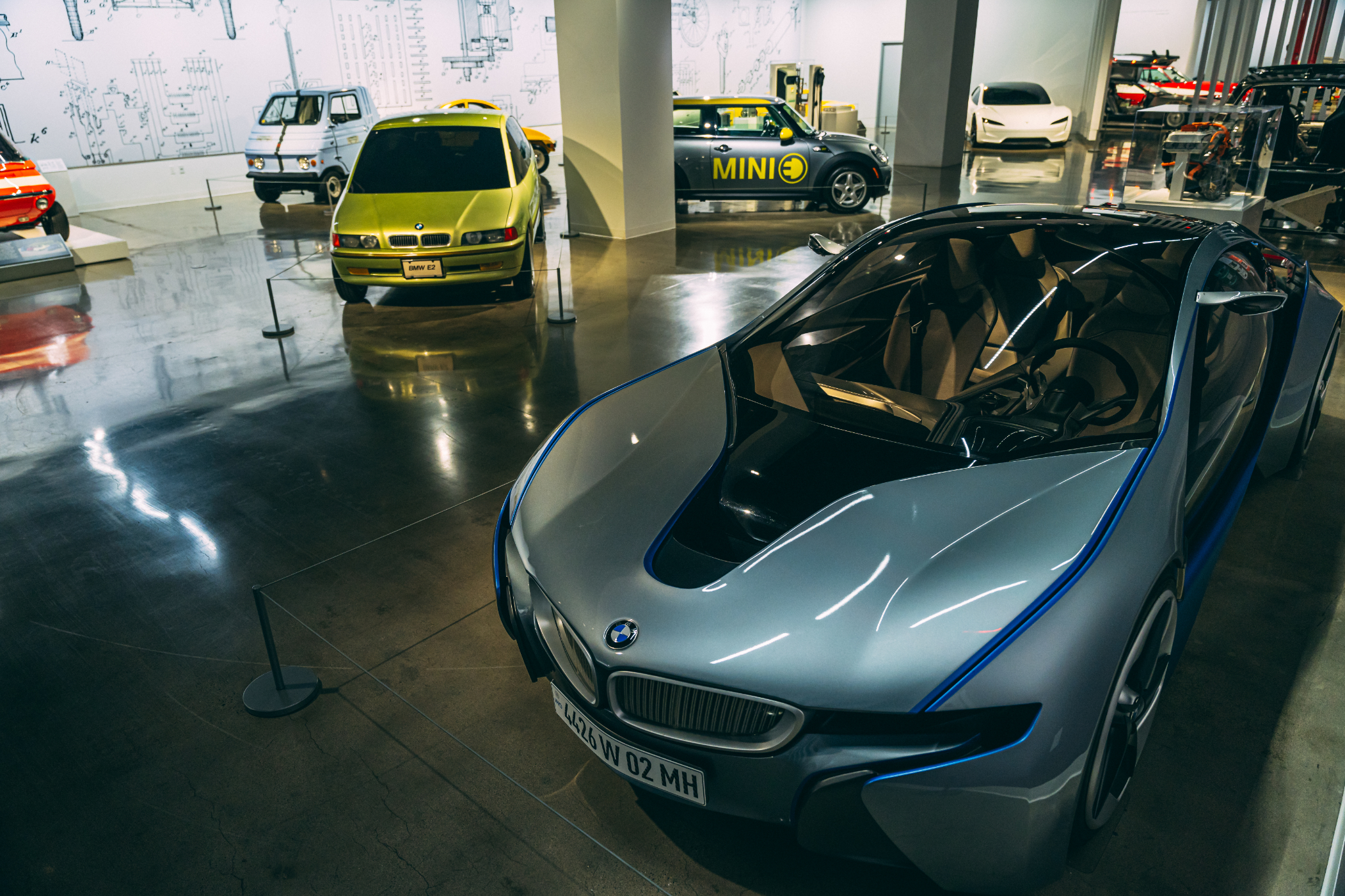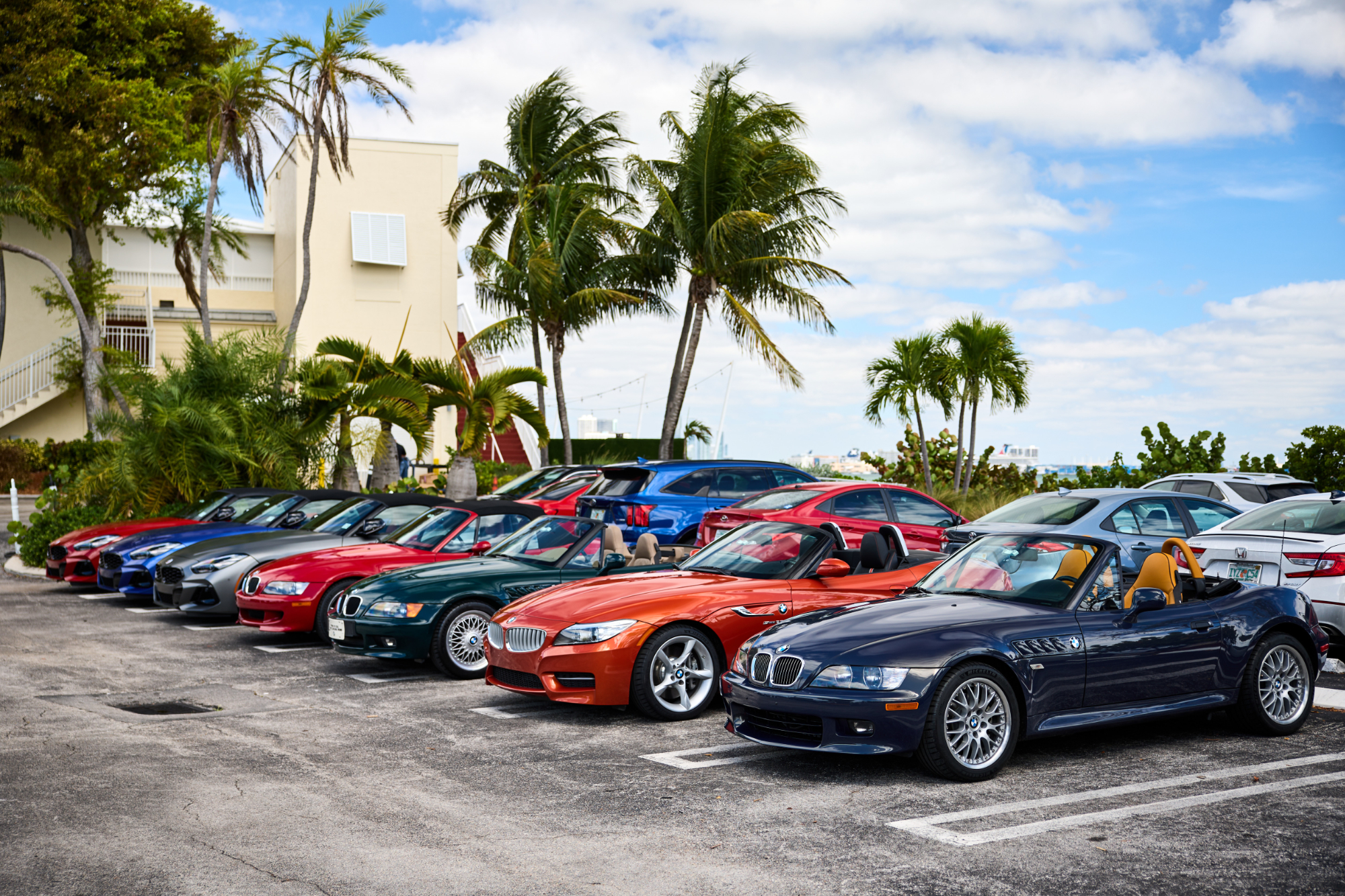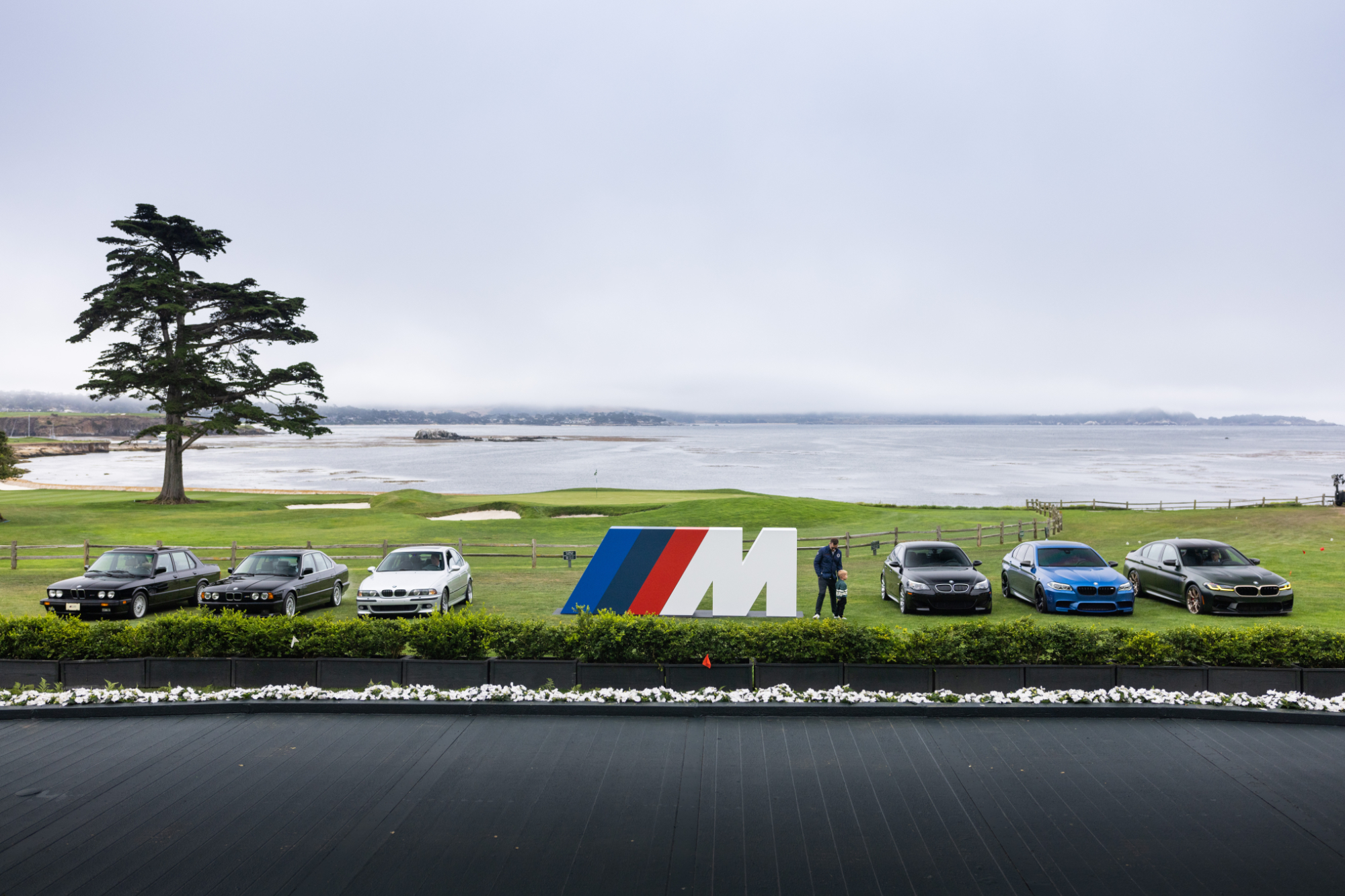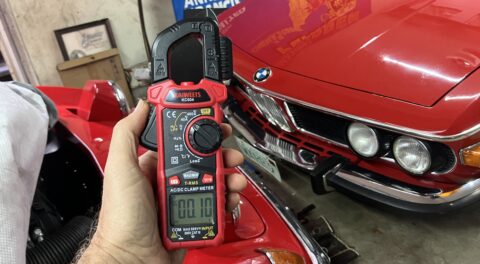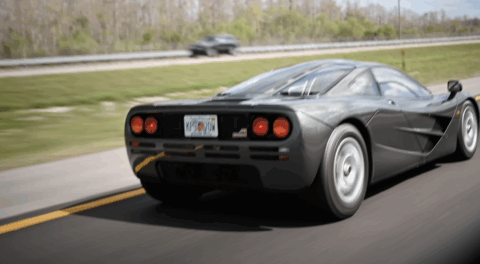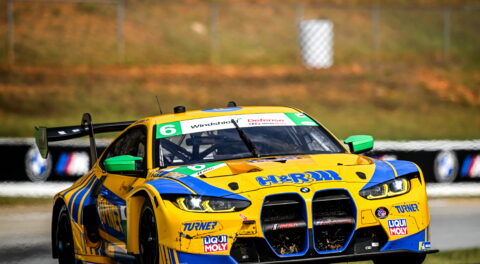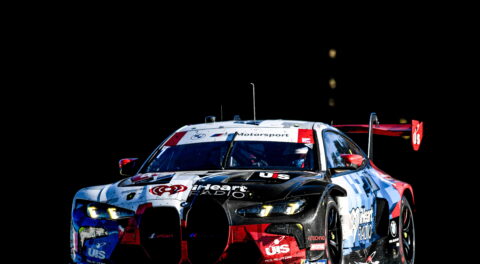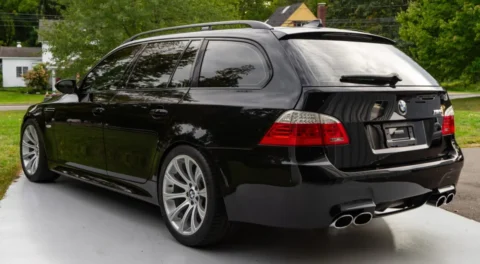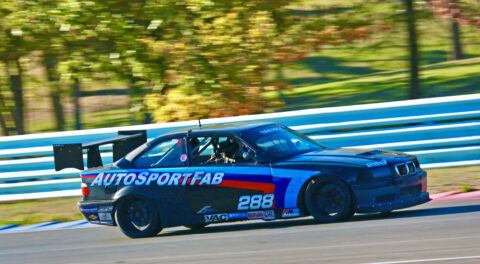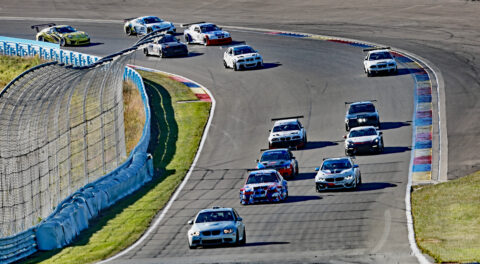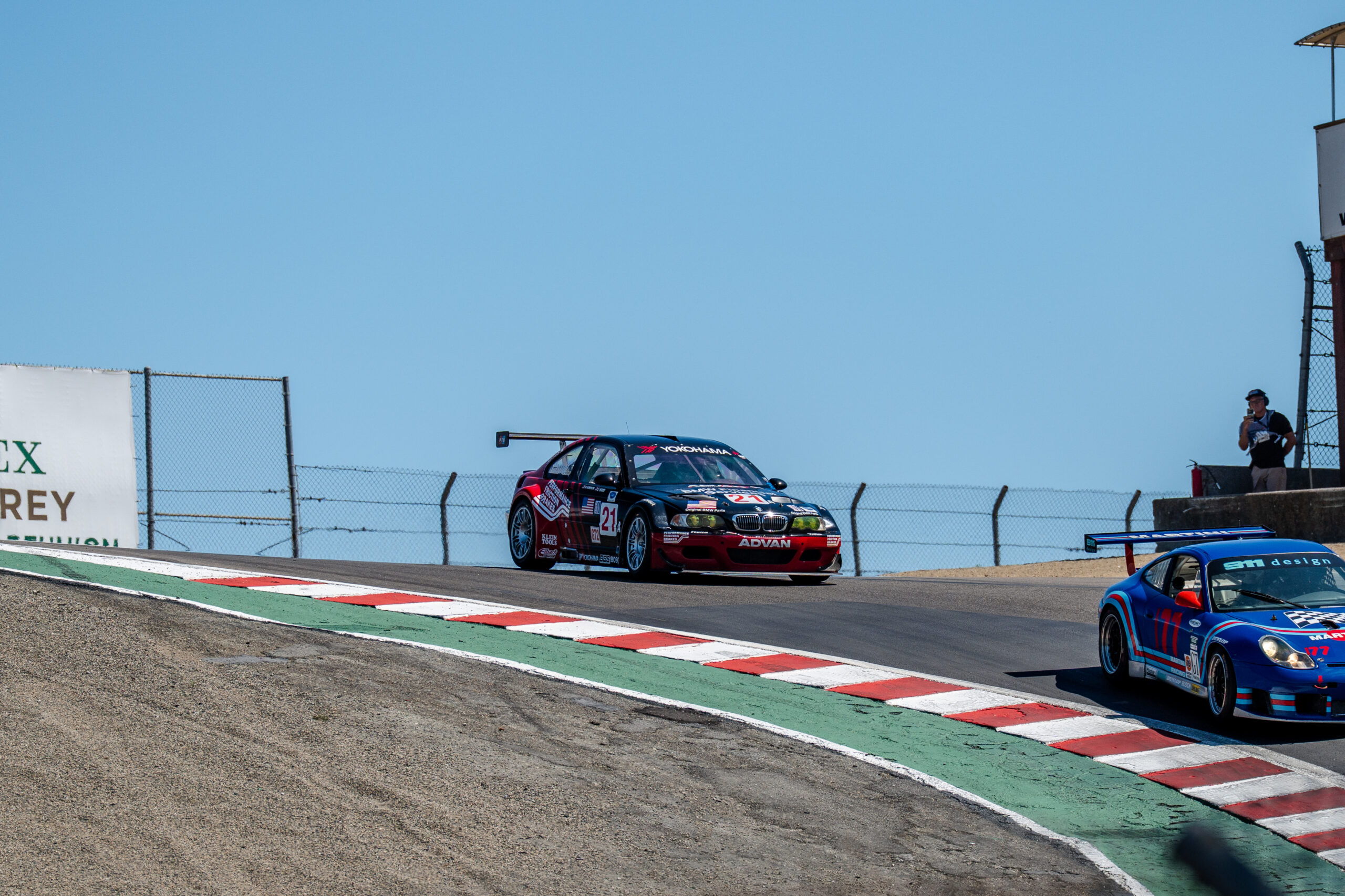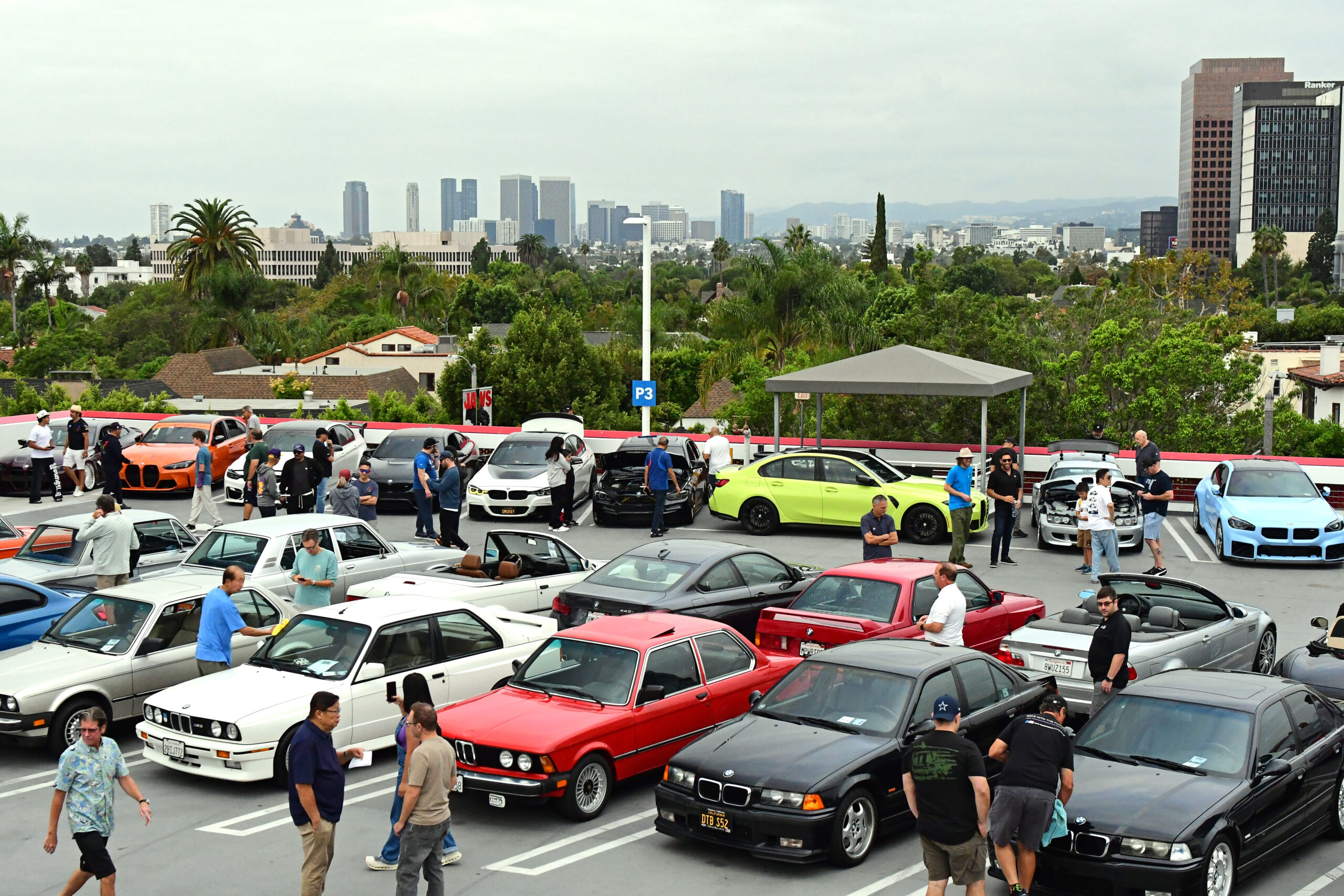The life cycle of an automobile has three distinct phases. First, it’s new, exciting, and perhaps expensive. A decade later, it’s out of date, with little value or allure unless it survives to the third phase. At this point, the automobile
becomes ‘vintage’, and values rise once again as it becomes a treasured survivor. This is true of many BMW models, and it is especially true of race cars, which lose most of their value the moment they’re no longer competitive.
Racing has always been essential to BMW of North America’s marketing program, and its factory team had a race-winning history in IMSA going back to 1975 and the 3.0 CSL. Its CSLs were turned over to Peter Gregg for the following season, and the subsequent 320i Turbo, M1 IMSA Group 4, and March prototypes—including the M1/C, one of the first cars with ground effects bodywork—were put in storage once their racing days were done.
In 1985, those groundbreaking race cars were on the verge of being destroyed forever when BMW NA’s newly-hired Motorsport Manager Erik Wensberg received some surprising news. “I can recall the very day, because I’d only been with the company for about three months,” said Wensberg. “I was at Lime Rock and was told that our race team, DM Engineering, had a bunch of our stuff gathering dust in a barn next to their shop in Danbury, Connecticut. I had no idea what they were talking about, but I said I’d come up and see.
“I opened the door of this barn, turned on the single light bulb hanging in the middle, and I was stunned. There’s the 320i Turbo with no wheels, sitting on the dirt floor. There’s the March M1/C, on its side. Two M1s, and a bunch of other stuff, wheels and boxes everywhere.”
Wensberg was told that BMW was going to donate the entire lot to a trade school “so that kids could learn to drill and cut. I said, ‘The hell it will! You lock this door and don’t open it until I tell you.’” He returned to Woodcliff Lake and found Hans Riedel, BMW’s Vice-President of Marketing. “I said, ‘Hans, this is a crime. All of our racing DNA is sitting in a pile of dirt in Connecticut, and they’re going to give it all away. We’ve got to restore these cars, bring them out, and show them as elements of pride in our history.’”
Crucially, Wensberg also expanded the collection, trading a spare M1 to Richard Conway in exchange for CSL #2275985—the car driven by Sam Posey and Brian Redman to second place at Riverside in 1975, to second and third with Stuck at the Lime Rock doubleheader, and second with Posey at Mid-Ohio.
All of the cars had been raced hard and put away wet, so to speak, and all were in need of restoration. With no budget for that purpose, Wensberg and Riedel got creative. “Riedel would bring me into every planning meeting where we were talking about a new production car and he’d say, ‘Erik, I think we need a vintage car here! What should we do?’ And I’d say, ‘Well, we could put the CSL there, but I need $45,000 to [have Jack Deren] restore it.’ ‘Okay, give Erik $45,000!’ We restored five or six cars one after another, and displayed them to great acclaim. We did a whole campaign with the enthusiast books, talking about a commitment to performance that dates back decades rather than months.
The 320i Turbo and the March M1/C and GTP (86G) prototypes had raced with turbocharged M12/13 engines that were problematic and expensive to keep running. Although they are all “display-only” now, Erik was able to restore the 320i Turbo and the BMW GTP as running examples. In 1992, they appeared at BMW Motorsport’s 20th-anniversary celebration, organized by Conway at Moroso Raceway in Florida. Four years later, they had a star turn when BMW was the featured marque at the Monterey Historic Races, an even bigger gathering in California.
Wensberg left BMW NA in February 1998, and his replacement was equally keen to maintain and expand the collection. Two years earlier, Larry Koch had helped Wensberg organize BMW’s presence at Monterey, and his first act as Motorsport Manager was to purchase a BMW 2002 race car from Vasek Polak’s shop in Los Angeles, which was being liquidated following Polak’s death. Later, he’d buy both of the E34 M5s campaigned by Ed Arnold Racing, including the one raced by David Donohue to the 1994 IMSA Supercar championship.
“The goal was to promote BMW performance and the M brand, and to show goodwill towards the BMW Car Club of America and various charities,” Koch said. “I added passenger seats to as many race cars as possible so we could provide rides, and I also started running the cars each year at the Monterey Historics, Lime Rock, and other vintage races, with the driver who drove the car when new if possible. We even took the March 86G and CSL to Goodwood, with Marc Surer and (then BMW NA CEO) Tom Purves driving in 2002 and 2003. It was all great fun, not ridiculously expensive, and it gained a lot of good press.”
From the mid-1980s through 2020, BMW NA began retaining its factory race cars, which has certainly helped to preserve the cars within the collection. Over the last two decades, BMW NA has retained at least one example of each body style raced by Prototype Technology Group in the American Le Mans Series from 1995-2006. That includes the most highly-developed E36 M3 that won Daytona in 1997 and Sebring in 1998, and two E46 M3 GTR race cars, one of which has been restored to its 2001 specification complete with its exotic P60 V8 engine as well as the Stars and Stripes livery in which it won Petit Le Mans in October 2001; the other runs the six-cylinder engine with which it won the Grand Am championship in 2004.
The most spectacular car of the era is the Sebring-winning 1999 V12 LMR, and the most unusual is one of a pair of 2006 335d race cars that competed in the 25 Hours of Thunderhill to promote BMW Clean Diesel. Driven by Car & Driver staffers, the cars used superior fuel economy to finish fourth.
At the end of the 2006 season, BMW NA took a hiatus from racing—officially, for lack of an appropriate venue in which to race its M3s, though Koch says the move had a financial motivation, as well. “The value of the dollar dropped a lot [against the Euro that had replaced the Deutschmark in 2000] between 2006 and 2008, impacting BMW NA’s profit margins,” he said. “Budgets were cut even before the economy crashed in late 2008, which is why the motorsport program was cancelled for 2007 and 2008.”
With no racing program to oversee, Koch shifted his attention to production cars as part of his role as BMW NA’s Mobile Tradition/Classic Manager. He acquired one of each generation of 3 Series for BMW, as well as an E28 M5 and Alpina V8 Roadster. “After the 1996 BMW celebration at Monterey, I wrote a paper that basically said we should use BMW’s heritage to promote the brand, and to differentiate BMW from the Lexus/Infiniti/Acura brands that had no heritage,” Koch said. “A subsequent consumer survey showed that brand heritage was the third most important factor in BMW purchases at that time, so we embarked on a heritage campaign—you’ll notice references to it in the TV ads of the time. It was also very popular with the BMW CCA, whose members were great extensions of the brand.”
In 2007, BMW NA began a new partnership with Rahal Letterman Lanigan Racing, which handled the vintage cars until BMW returned to the ALMS in 2009. Developed in the wake of BMW’s withdrawal from Formula One, the E92 M3 GT was a showcase for aerodynamic and drivetrain developments.
When Koch retired in 2012, responsibility for BMW Group heritage worldwide had shifted to the Corporate Communications area of the company, so it made perfect sense for the BMW NA classic collection to be transferred to Tom Plucinsky, then Head of BMW Group Product Communications. “For me, it’s an honor and a privilege to be able to curate and preserve the heritage of BMW NA through the classic collection,” Plucinsky said.
“When I took over in late 2012 the E92 M3 GT racing program was just ending, and I inherited all the assets,” he continued. “We finished the 2012 season with two good cars, but unfortunately the chassis with the most provenance (#1101) had been crashed mid-season, and once the tub was repaired, it had remained as the spare chassis. My first order of business was restoring #1101 back to its 2012 Sebring-winning specification and livery. I also had to negotiate with BMW Motorsport to keep a couple of sets of the proprietary aerodynamic wheels that were used for the long races.”
Chassis #1101 with drivers Joey Hand and Dirk Müller won the ALMS titles for drivers, team, manufacturers, and Michelin Green-X Challenge in 2011, making it an especially important car within the collection.
“My second task was to rebuild #901, which was the very first M3 GT2 built and the 2009 Team and Manufacturers Championship-winning car,” Plucinsky said. “Again, both Team Principal, Bobby Rahal and BMW Motorsport were very supportive, finding the early parts and devoting the time needed to restore that car.”
For 2013, BMW NA and BMW Motorsport switched to the Z4 GTLM for IMSA racing in the US. In total, five examples of the Z4 GTLM were produced, of which the BMW NA collection holds four and BMW AG holds the fifth.
BMW NA also kept all four of the M6 GTLMs raced in 2016-2017, including the priceless John Baldessari Art Car (#1502) and the #1705 in “Bill Power” livery that took a GTLM-class victory in the 2017 Petit Le Mans, Bill Auberlen’s last race as a full-time BMW NA factory driver. The latter car is preserved as it took the checkered flag, complete with all of the dirt and debris it accumulated over ten hours at Road Atlanta.
In 2018, the M6 was replaced by the spectacular F92 M8 GTE, of which BMW intends to keep the cars that won Daytona (#1706) and Laguna Seca (#1802) in 2019 as well as a show car (#1705); the other three will eventually be sold. As BMW M Motorsport’s customer racing program has developed worldwide and race car engineering and parts support is available, BMW M Motorsport determined that it would be able to sell and provide support for the BMW M8 GTE. As a result, the 2020 Daytona winner has been sold to a private collector, and two others are ready to be sold for classic racing.
That’s a sizable collection of race cars, and maintaining it represents a substantial investment on the part of BMW NA. Since 2024, responsibility for the collection has been delegated to a new department: BMW Group Classic USA, led by Plucinsky.
Like Koch and Wensberg, Plucinsky ensures that the cars show off BMW’s heritage at concours events like Amelia Island, Legends of the Autobahn, and Pebble Beach. He’s also loaned them out for exhibits like Heroes of Bavaria and The Power of M at BMW CCA Foundation’s Ultimate Driving Museum, and to the Petersen Automotive Museum in Los Angeles. Along with static events, some of the cars like the ALPINA 2002—now restored in its original Alpina orange livery—and the CSL get to race at the Rolex Monterey Motorsports Reunion.
Along with that impressive fleet of race cars, BMW Classic USA maintains a fleet of roadgoing BMWs collected initially by Koch and Kenn Sparks, each of whom preserved BMW’s road cars for different purposes.
While Koch was collecting cars like the 2002 tii, E28 M5, Alpina V8 Roadster, and every generation of 3 Series, Sparks was ensuring that BMW Manufacturing preserved its own history in Spartanburg. As part of his job directing internal communications for the plant, Sparks became responsible for the Zentrum, the plant’s welcome center and history museum. “At the time, BMW Mobile Tradition was just getting underway, and BMW chairman Bernd Pischetsrieder instructed Christian Eich to give the Zentrum a selection of BMWs that would show off the history of the company,” Sparks said. “We also built our own historical exhibit with the models being assembled at the plant, like very first 318i ‘signature car’ and the James Bond Z3 from GoldenEye.”
Sparks preserved a coterie of interesting Z-cars assembled at Spartanburg, including the last Z3 M roadster built, a Z3 M coupe in rare Laguna Seca Blue, and an export-only Z4 Alpina Roadster S. He saved plenty of X-vehicles, too, including an X5 with American flag paintwork done as part of the BMW STEP program for body and paint students that has served as a powerful symbol of BMW’s engagement with the US.
Finally, the collection includes several classic Minis, a few BMW Group era MINIs, a number of motorcycles and some additional artifacts such as design models. The motorcycles include several from the Butler & Smith era (1954-1980) acquired by Fred Jakobs of BMW Group Classic for display at the Zentrum. Many of the bikes were featured in the BMW CCA Foundation’s 2023 exhibit, BMW Motorcycles: A Century of Innovation.
Now that all the individual collections have been brought together under BMW Group Classic USA, the division can take a more strategic view of what should be added to the collection. “Koch and Sparks had done a great job of acquiring vehicles that would be important to the histories of BMW NA and Plant Spartanburg,” Plucinsky said. “Now it’s my job to fill in some missing vehicles and to plan for the addition of current vehicles that will tell the story of the company’s history 10, 20, 50 years from now.”
As a case in point, last year Plucinsky was able to purchase a V10 powered E60 M5 with a manual transmission—a combination that was only available in North America. More recently, BMW Group Classic USA added the five millionth and six millionth vehicles assembled at Plant Spartanburg: an X5 M in Toronto Red and an X6 M in Java Green, respectively. “We chose the models because of the 5M and 6M right in the names, and we chose them in those colors because wanted to memorialize that the plant can now paint BMW Individual colors,” Plucinsky said.
In May 2025, the plant’s seven millionth vehicle was added to the collection. This time it was an ALPINA XB7 in ALPINA Green, marking the end of the independent ALPINA era and the beginning of a new BMW ALPINA era next year.
“Today, the vehicles in the collection are used for a variety of communications initiatives,” Plucinsky said. “For example, last year was the launch of the new BMW M5 and M5 Touring, so examples of previous-generation M5s were in high demand for marketing and PR communications and events. This year is the 50th Anniversary of the BMW 3 Series, so both the street and racing versions of these cars are in high demand. Finally, for my favorite classic activation this year, BMW NA celebrated the grand opening of its new headquarters on its 50th Anniversary, and what better way to cut the ribbon than with the model that started it all for BMW in North America: the BMW 2002tii!”
Tags: bmw classic BMW History Heritage preservation

